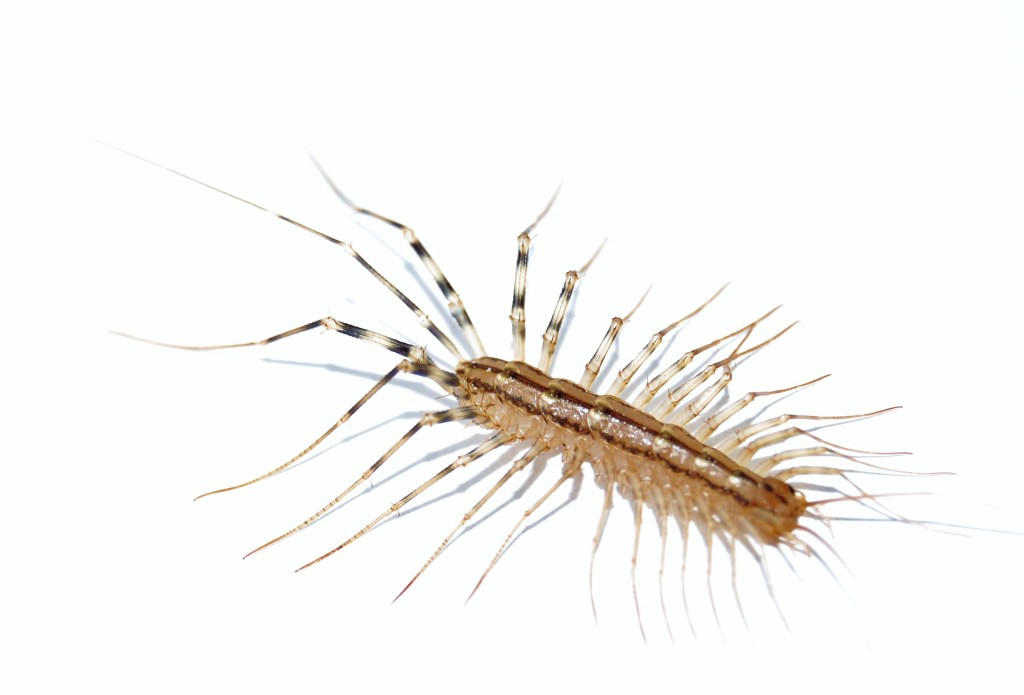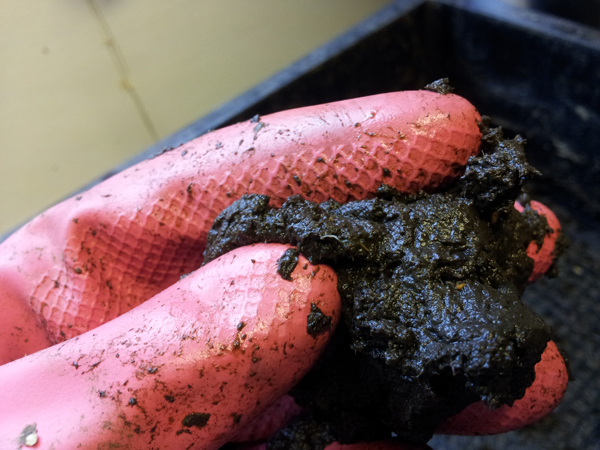I’ve been called a lot of strange things in my life, but I never thought I could be called a nematode-lover.
I certainly never envisioned a day when my wife would start referring to house centipedes – those terrifying huge invertebrates that seem to have a million legs and run at top speed – as our “honored guests.”
We’re definitely not “bug people,” so what turned us around?
As an ecologist, I can appreciate that even unlovable critters serve valuable functions in nature like decomposing organic matter and keeping the populations of other organisms in check.
Then again, I never thought the indoors had room for biodiversity or strange “guests.” Living in the aptly named “eco-house” in college (where a dirt floor basement and holes in the walls contributed to hefty populations of slugs, moths, flies, and more) forced me to get used to it, but it certainly wasn’t my ideal living situation.
So you can imagine my unhappiness when I discovered several years ago that I’d moved into a condo chock full of house centipedes.
Then the ecologist in me started wondering why they were there, and what would happen if I successfully got rid of them. I knew that getting rid of wolves in Yellowstone led to a number of problems (e.g. higher elk populations started to wipe out cottonwood groves), and that the centipedes wouldn’t be there if they weren’t finding something to eat.
It turns out house centipedes actually eat cockroaches, ants, bed bugs, moths that can eat clothes, and other household pests.
We don’t keep a pristine house, and living in a condo there are always cockroaches and ants somewhere nearby, waiting to strike. When we realized that these beasts were our front line against even more unsavory bugs, our attitudes towards them changed; after all, the enemy of my enemy is my friend.
No more vacuuming them up, and no more trying to bring the humidity levels low enough to make them unwelcome.
A Few Million Nematodes
When our household worm compost bin (another adventure in urban ecology) got infested with fruit flies, we naturally wondered about biological controls.
While there were many species of mites, springtails, and other tiny bugs in our bin, we were missing predators.
I ordered a few million nematodes (a kind of tiny roundworm) by mail. Within a few weeks (long enough for the adult flies to die off and their larva to have been eaten) we had a fly-free bin. To this day, I smile when I see the tiny little white thread-like nematodes patrolling my compost bin, looking for new larvae to eat.
My wife has made it clear that bringing in spider eggs from outside to take care of the occasional housefly is going too far.
But we’ve learned that whether we like it or not, we do share our homes with a variety of other creatures.
Rather than dive into a spiral of ever-increasing applications of poison or traps, we’ve been learning to love our allies, no matter how creepy they may be.
(Photos: Centipede by Flickr user robswatski under a Creative Commons Sharealike license; nematodes by Jon Fisher/TNC under a Creative Commons Sharealike license).





Appreciate you ??
When I was a kid, I used to be scared as all shit of these when they crawled out of the drain or when zooming across the floor at high speed. So many legs, meant danger to my mind. About seven or eight years ago now I started seeing one particular specimen in my basement, and decided to look them up. Reading articles like this about how they’re helpful, I named him Frank and decided to leave him be.
I did have to rescue him from the shower a few times, and let him know that I was fine with him being in my room but my face was off limits for midnight exploring. I like to think we became friends, though a few years later he was getting too old- too big to climb anywhere without falling off, too slow to catch the meagre offerings of bugs invading our house. I moved him outside during the height of summer and mourned his departure like I would a favoured pet.
He was succeeded by his many children, some of whom have since grown big and clumsy and gone outside, but many others lurk beneath the trim, behind appliances, and under furniture- doing good work keeping the house clean. My mom affectionately refers to all of them as ‘Franks’, though she still calls me occasionally to shoo away some that have invaded her space. Usually I just pet them lightly and that sends them off, but occasionally stronger methods are needed- a paper towel is usually good to push them away from a space without injury.